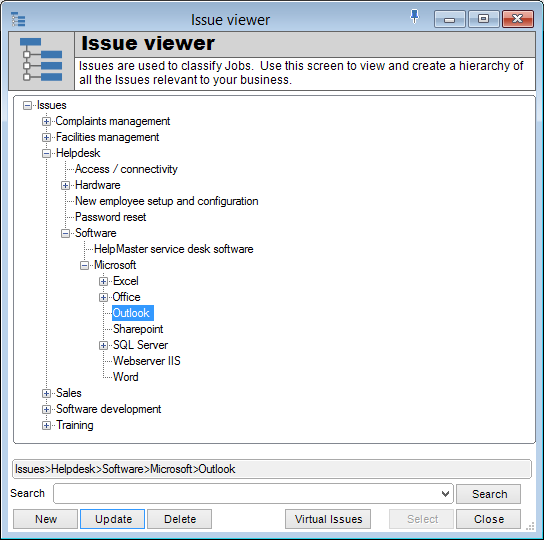Issues overview
This is where the classification system code is used.
A classification code is applied to all jobs and is therefore a mandatory field when logging a job. Classification codes can be organized into a hierarchy of up to 5 levels deep.
The classification code plays an important role in searching, reporting, escalation and automation throughout HelpMaster.
The image below displays the hierarchical list of classification codes. Note the text box at the bottom of the screen that displays the “flattened” hierarchy, i.e. Issues>Helpdesk>Software>Microsoft>Outlook. This is what gets displayed on the job screen.

Classification codes can be created, deleted and modified. A classification code can be placed in one position in the tree and then moved to another via drag ’n drop.
In order to assist with keeping the classification code hierarchy well-defined and standardized, HelpMaster also supports the concept of Virtual classification codes. These are groupings of classification codes that can be bulk-updated, bulk-deleted and bulk-added to existing issue nodes.
See also
Creating, updating, deleting classification codes
Using Classification codes in other features
Create Knowledge Base Articles and link them to the classification hierarchy
Create job templates with pre-filled classifications - see Templates Overview
Run reports based on job classification - see Reports
Automate around the classification - see PriorityManager and TriggeredEvents
Build Workflow based on the classification - see Workflow Overview
Feedback
Was this page helpful?
Glad to hear it! Please tell us how we can improve.
Sorry to hear that. Please tell us how we can improve.